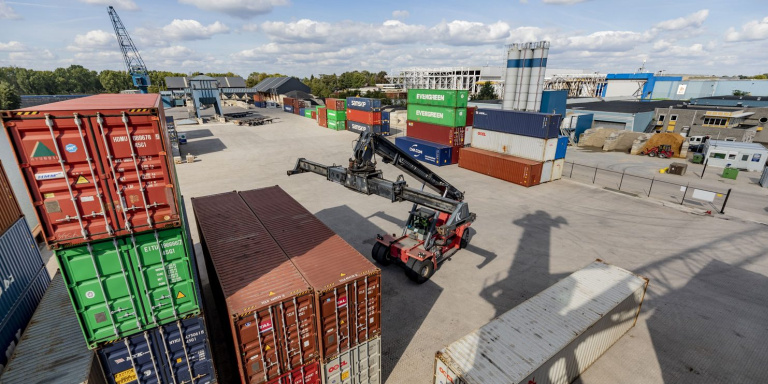Upgrade of the inland container terminal Venray
The container terminal Venray has recently been upgraded. Every year, 50,000 full containers are handled at the terminal and with the new layout of the site, the terminal is ready for further growth.

According to Antal Rozijn, terminal manager of both BCTN Venray and Roermond, the overhaul of the container terminal in Wanssum was already about six in the planning. "But it has finally been implemented. The basin has now been completely extended. If we had not made any agreements, we would now have been on two sides of the harbor. Three years ago we agreed with the province that we could get land back at the terminal for the land we had to hand in. And it worked. We have now leased the new piece from the province for 30 years. "
More efficient
Although the site of the terminal went from 44,000 to 40,000 square meters, according to CEO Joop Mijland of BCTN, the terminal is now much more efficient: "That way we were able to extend the crane track over the entire length of the terminal. You can now easily work with two ships behind each other, here at the 340 meter quay. And we intend to expand further here. If the volumes continue to increase, we will consider installing a second crane.
The new diesel-electric Nijmegen Max will also call at the terminal in Wanssum. This ship makes the round trip from Roermond to Venray, Nijmegen, Alblasserdam, Rotterdam and back twice a week. The full containers usually contain a variety of cargo such as high-tech electronics, stones, clothing and wine. Most of the containers are imports. Especially for the region around Venlo and Venray. According to Rozijn, exports are also starting to get going."
Corona crisis.
In recent months, the terminal in Roermond has been particularly affected by the corona crisis. "This terminal is largely dependent on non-food retail," says Mijland: "As a result, Roermond has been inactive for a few weeks. Here in Wanssum we spend a lot of time in high-tech and it has been quieter there for longer than the traditional Chinese New Year. But we have kept our sailing services afloat. We wanted to be able to continue to provide the service. They are scheduled services where you cannot easily remove barges. "
At the end of August, volumes had recovered to normal levels, according to Mijland: "If we look at how we are now across the board, we are still quite on budget."
Back to news overview